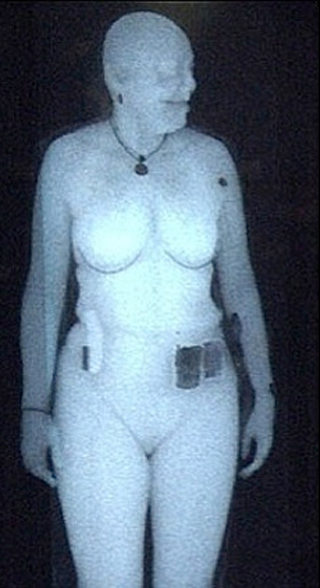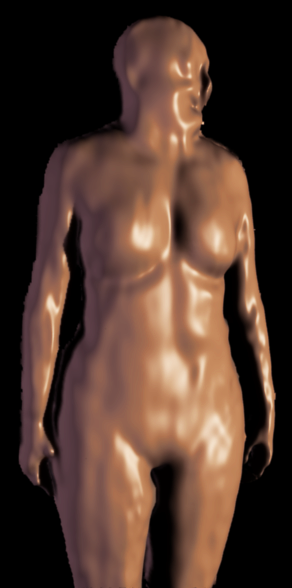TSA Images
The controversy over the images taken by the TSA is increasing:
He then added:
Note: I modified the source image in Photoshop by cropping and resizing to better match Markku’s result.


- The TSA says that the scanners cannot save the images yet Gizmodo shows 100 images from 35,000 illegally saved images from a courthouse in Orlando, Florida.
- Scientists are speaking out about the supposed safety of the devices, for example, this letter from four faculty members of the University of California at San Francisco.
- The threat of a $10,000 civil suit against a man who refused scanning then told a TSA agent that he would file a sexual assault case were the agent to touch his “junk," was told to leave the airport by TSA agents and then, after receiving a ticket refund from American Airlines, was threatened with a lawsuit by another TSA agent.
- One Florida airport is opting out of using the TSA to screen passengers.
What I did was, I created a grayscale image of it in GIMP. I applied selective gaussian blur (I don't remember what exact values.) I removed the necklace, the watch and the objects at the belt by using clone brush tool. Then I used this tutorial to apply it as a height map to a grid with resolution 400*400, and scaled the height and the depth dimensions to what looked correct.
Looking at the model from the side, I selected the lowest vertices with rectangle select and deleted them. Then came the artistic part (in addition to the removal of the objects, but if the person has none, this is not a problem), which is hard but not impossible to do as an algorithm: I smoothed the roughness in sculpt mode, until I was satisfied with the model. I placed a blueish hemisphere light over the model, and a white, omnidirectional light in the direction where the sun would be. I colored the material to skin color and lowered specularity to almost none.
Had I used more time, I could have made the skin look much more realistic. This was just a proof of concept. And when you have made a realistic skin texture once, you could apply it to any model without extra effort.
He then added:
Still far from photorealism, but won't leave many secrets about your body unrevealed, either. Plus, increase radiation resolution, and you could almost certainly reconstruct even the face.
Note: I modified the source image in Photoshop by cropping and resizing to better match Markku’s result.



